Why life cycle?
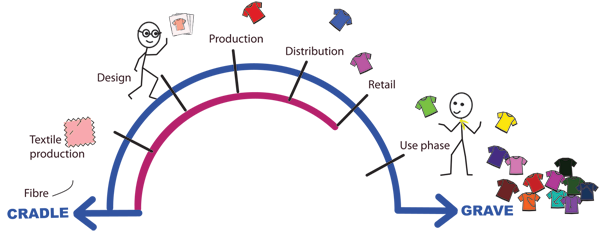
Traditional garment life cycle: cradle to grave
Mass market fashion is affordable, accessible and democratic. However, it is based on a linear model of production where resources are extracted en masse, manufactured into garments and then sold to consumers, who rapidly dispose of them to purchase new product.
This mode of production does not acknowledge that the resources used to manufacture garments - land, fibre, water and fuel - have physical limits. In 2050, the global population is predicted to reach 9.3 billion people, all of whom have the right to be clothed and fed. A fashion system predicated on wasteful throughput of material goods is unviable long term.
At every stage, there are environmental and social impacts that can be acknowledged within the design process. Life cycle thinking is the starting point. To think in terms of life cycle means to consider the inputs and outputs of a garment.
What are the impacts of the fibre and textiles used to make the garment? What are the outputs of the garments - what are its environmental impacts during its use phase, how can it be reused, or eventually disposed of?
Speed is also a consideration; for example, faster items can they be designed to disassemble at end of life or designed to be closed-loop recycled, while slower, classic pieces can be repairable, alterable and designed to last.
High volumes of physical product could be reduced by developing product service systems (PSS) such as hiring or styling services.
See credits for further reading.
Asking life cycle questions
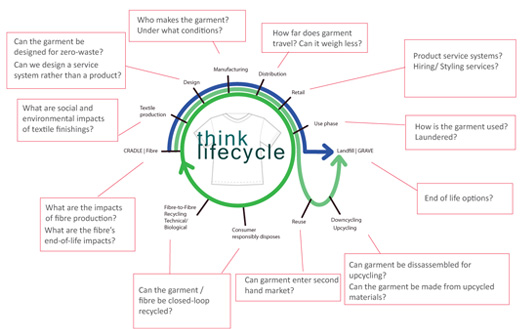
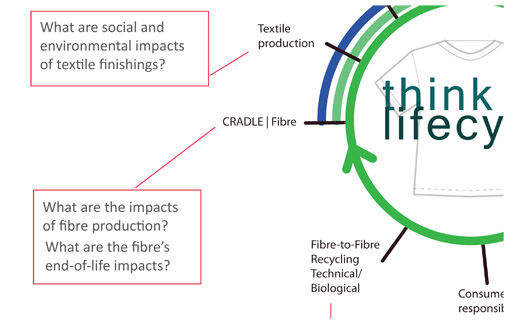
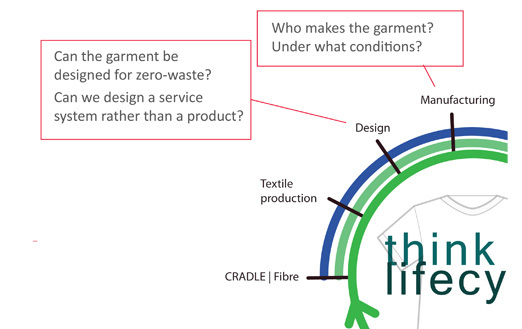
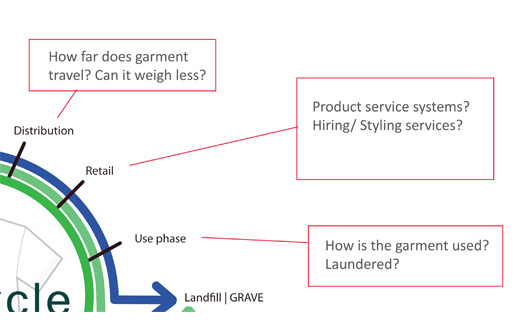
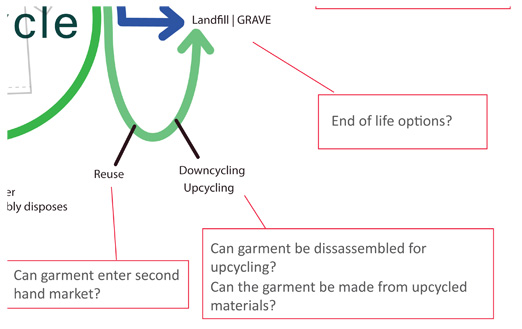
Asking life cycle questions
Asking life cycle questions2
Asking life cycle questions3
Asking life cycle questions4
Asking life cycle questions
5 - 5
<
>